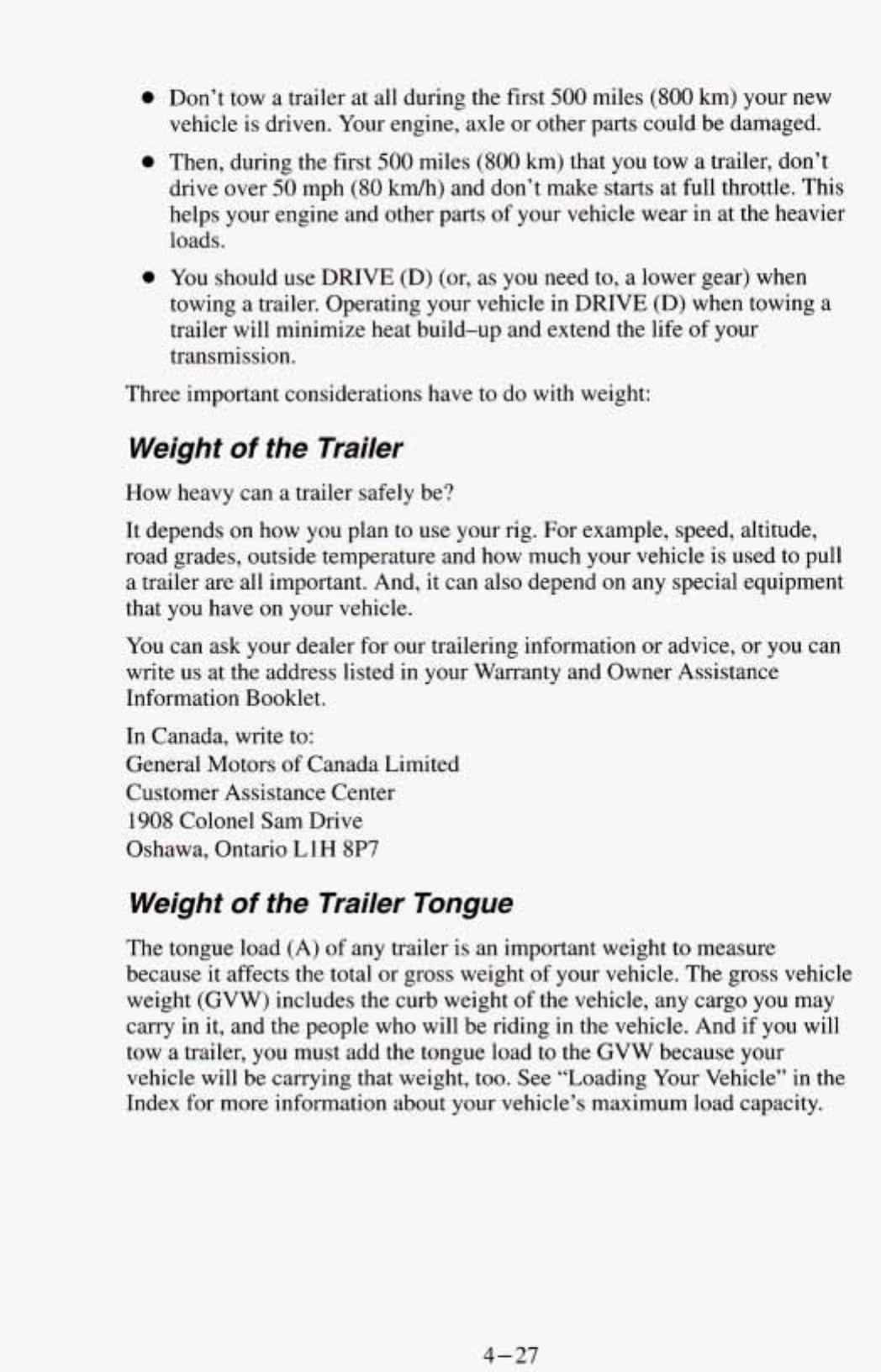
0
0
0
Don’t tow a trailer at all during the first
500
miles
(800
km) your new
vehicle is driven. Your engine, axle or other parts could be damaged.
Then, during the first
500
miles
(800
km) that you tow
a
trailer, don’t
drive over
50
mph
(80
kdh) and don’t make starts at full throttle. This
helps your engine and other parts
of
your vehicle wear in at the heavier
loads.
You
should use DRIVE
(D)
(or, as you need to, a lower gear) when
towing a trailer. Operating your vehicle in
DRIVE
(D) when towing a
trailer will minimize heat build-up and extend the
life
of your
transmission.
Three important considerations have to do with weight:
Weight
of
the Trailer
How heavy can a trailer safely be?
It depends
on
how you plan
to
use
your rig. For example, speed, altitude,
road grades, outside temperature and how much your vehicle is used to pull
a trailer are
all
important. And, it can also depend on any special equipment
that you have on your vehicle.
You can ask your dealer for our trailering information or advice, or you can
write us
at
the address listed in your Warranty and Owner Assistance
Information Booklet.
In Canada, write to:
General Motors of Canada Limited
Customer Assistance Center
1908 Colonel Sam Drive
Oshawa, Ontario
LlH
8P7
Weight
of
the Trailer Tongue
The tongue load
(A)
of any trailer is an important weight to measure
because it affects the total or gross weight
of
your vehicle. The gross vehicle
weight (GVW) includes the curb weight
of
the vehicle, any cargo you may
carry in it, and the people who will be riding in the vehicle. And if you will
tow
a
trailer, you must add the tongue load to the GVW because your
vehicle will be carrying that weight, too. See “Loading Your Vehicle” in the
Index for more information about your vehicle’s maximum load capacity.
4-27


















